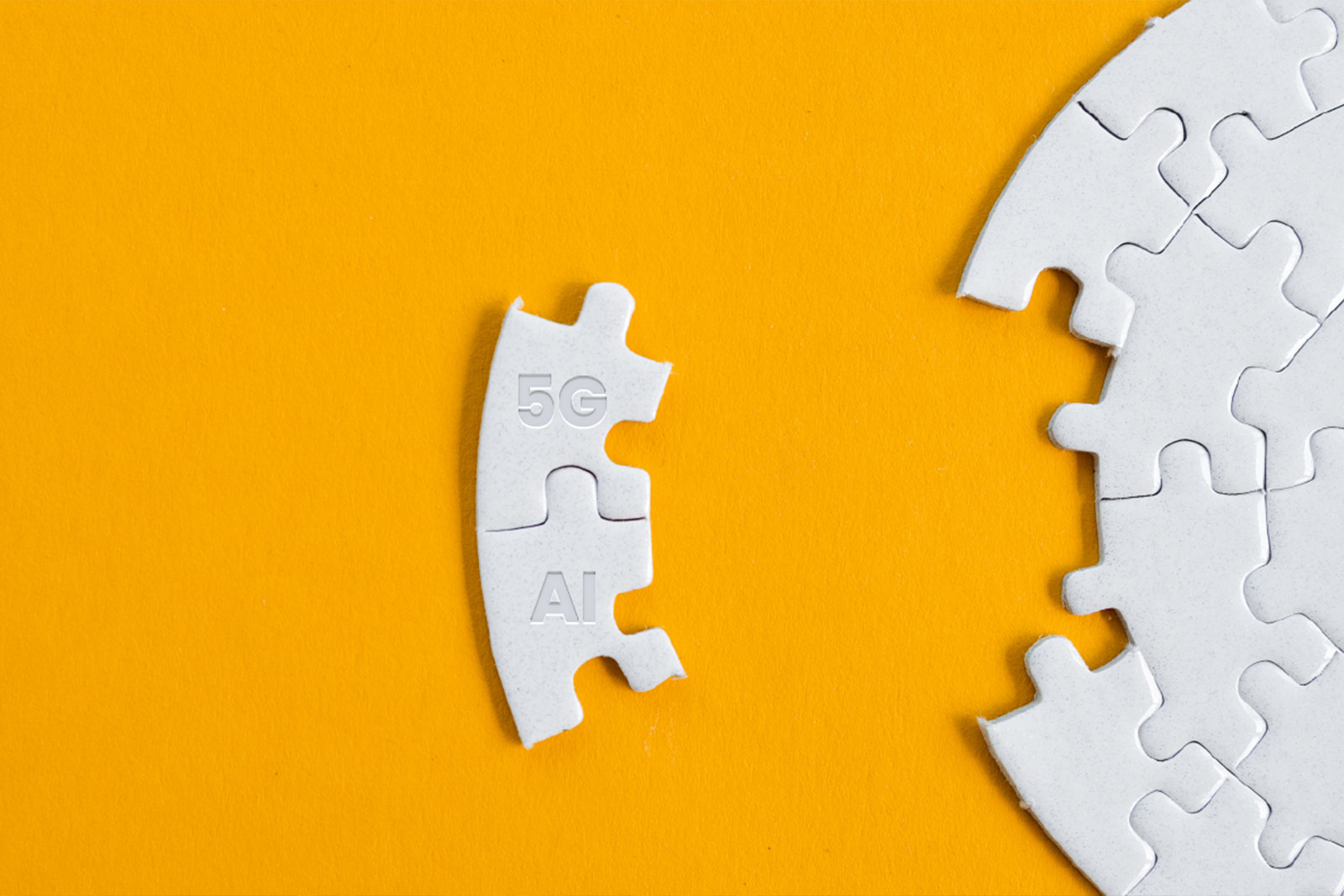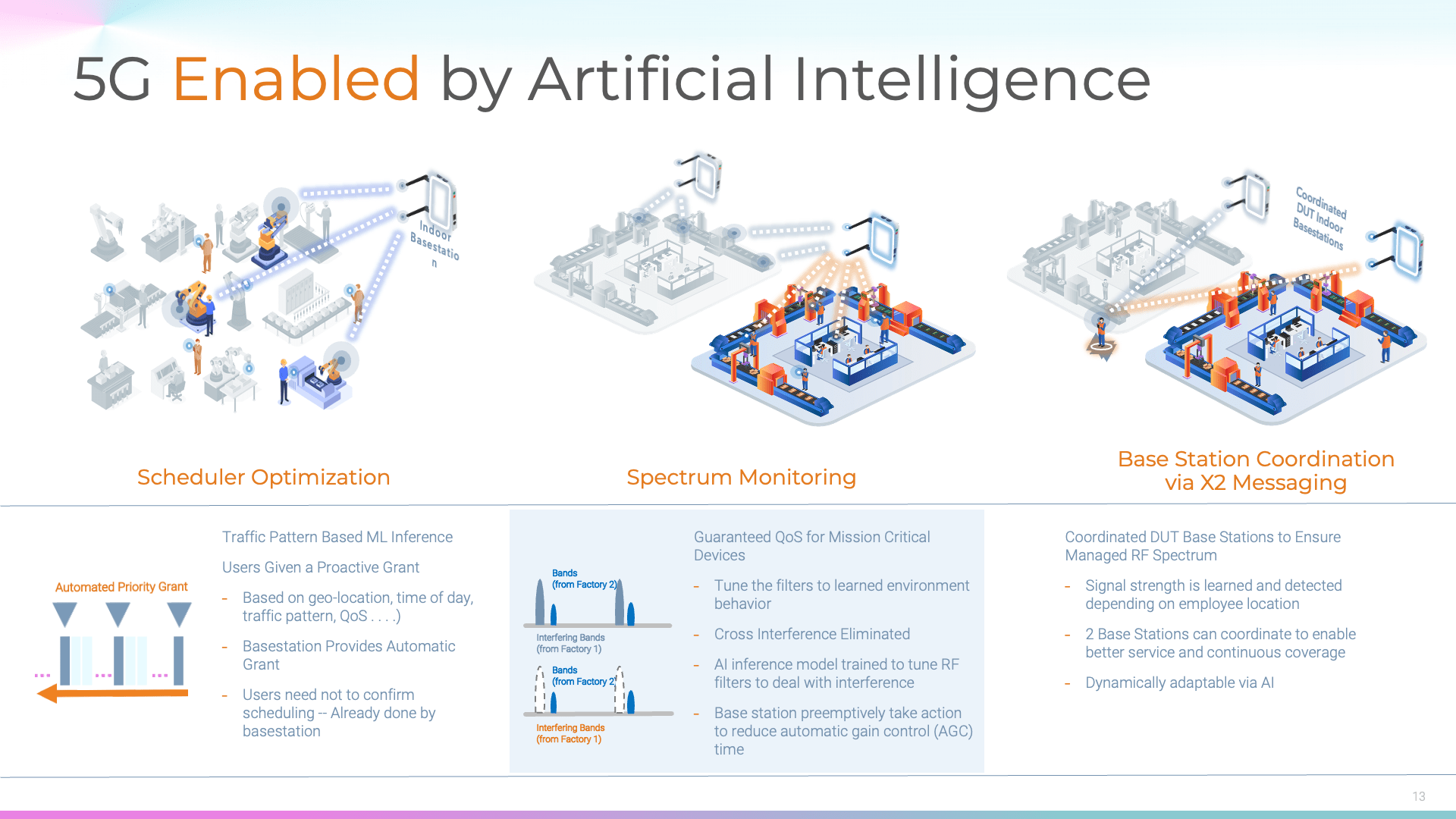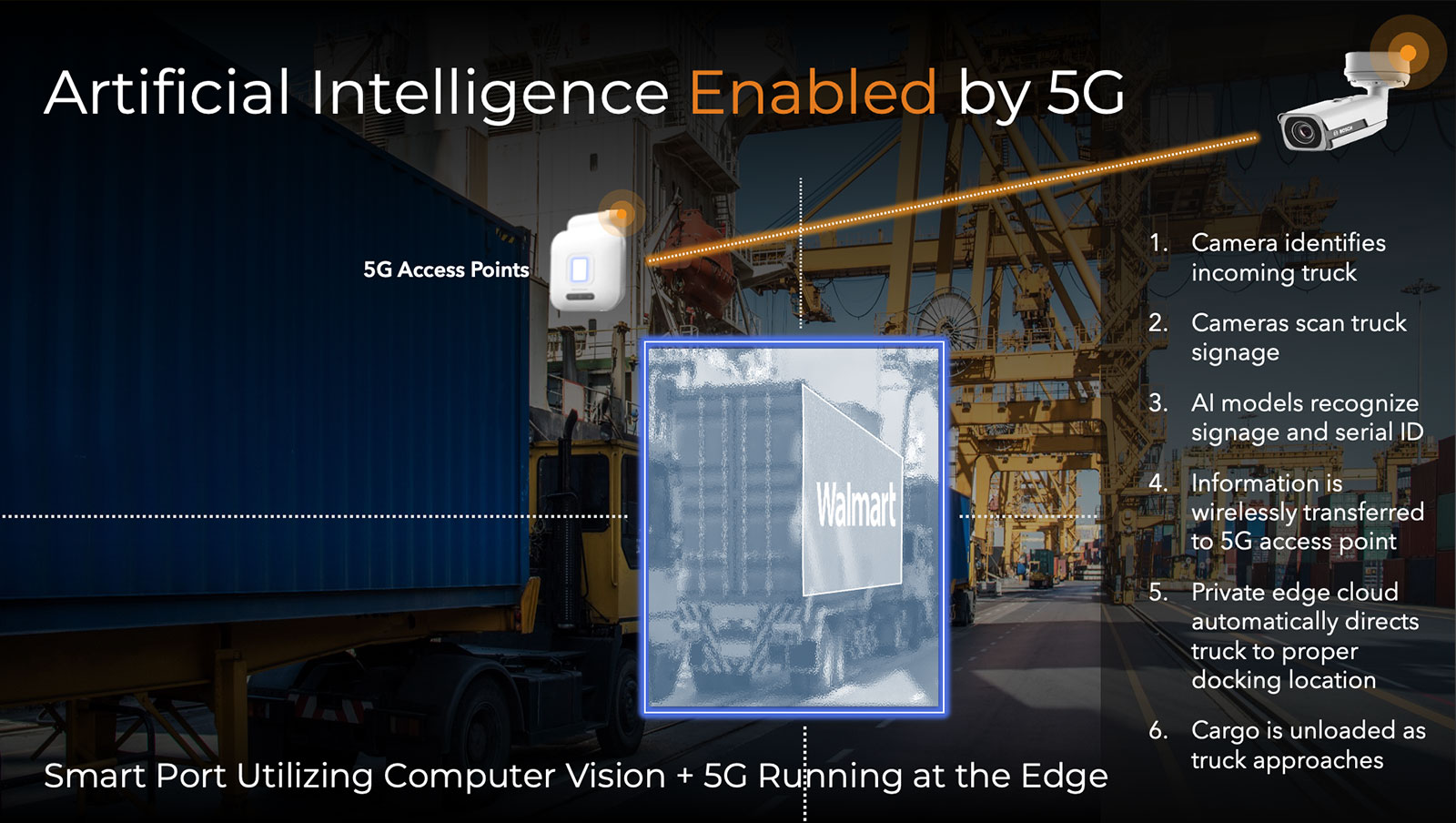Blog Page
Better Together: How Artificial Intelligence and 5G Bring Out the Best in Each Other
Batman and Robin. Bonnie and Clyde. 5G and AI.
by Adil Kidwai | VP of Product Management
25 Sep, 2023
NaN mins

Ecologists, material scientists, chefs, and even comedians often seek inspiration from other fields and industries to drive innovation in their own work. Similarly, engineers have found 5G and Artificial Intelligence, two hot technologies in their own right, to unexpectedly marry well together. Think of 5G and AI as the next Batman and Robin, prepared to revolutionize industries with each other’s support.
We have heard of AI generating content, giving medical diagnoses, recognizing objects, and enhancing automation and autonomy. We also have heard of 5G bridging the digital divide by allowing the “things that think” to connect wirelessly and frictionlessly to the cloud. The car quickly becomes a computer on wheels, the airplane a data center with wings, and the smartphone becomes a digital wallet. As the world of data expands, so does the need to connect people, devices, and the cloud.
5G Enabled by AI
Imagine 5G as Batman, ready to tackle industry choke points. AI covers 5G’s back so nothing slips through the cracks. 5G’s connectivity will be enhanced by on-device AI training so that factors like network traffic, beam pattern optimization, RF spectrum monitoring, and resource allocation are managed better. Imagine an automated manufacturing factory with a constellation of assembly devices all connected to a 5G network. AI algorithms can analyze vast amounts of data generated by the network and provide insights into network usage patterns, traffic congestion, and performance issues. This data analysis can help network operators optimize network traffic, allocate resources more efficiently, and reduce latency, resulting in faster speeds and a better end user experience.
This is 5G “enabled and enhanced by AI”. Think about a scheduler algorithm having access to an AI model that predicts user behaviors and knows which user to prioritize and when. 5G users can massively benefit from this enhancement in the scheduling algorithm. Another example is a Radio Frequency chip with access to an AI model that can predict the interference patterns at certain times during the day and therefore tune RF filters appropriately to deal with the interference before the interference occurs. AI has the ability to process a vast amount of data and therefore can give critical information to 5G algorithms and make them “better”

5G made better by AI
Now, let’s swap roles and have AI take the Batman role, and 5G act as the sidekick. AI benefits from 5G in that decision-making is expedited by 5G’s low latency (URLLC) and massive machine-type communications (MMTC). Simply stated, 5G effectively brings the cloud to wherever you are. Communicating the necessary data and analyses to the correct users in a timely manner would boost productivity and instantaneously drive data analysis and synthesis. This is essential for time-sensitive tasks such as object detection/recognition, swarm robotics, traffic management, digital twinning, or spatial computing such as AR/VR.

What the next generation of 5G + AI looks like today
If this all sounds too much like science fiction, these ground-breaking ideas have already begun taking shape. Tianjin Port is one of the world's seven largest ports, with an annual container throughput of 20 million TEU. Tianjin Port uses the latest technology comprised of 5G, autonomous driving, cloud computing, and IoT to create a better connected, smarter, and more autonomous system. As a result, overall costs have been reduced by 30%. Drivers now operate trucks remotely and no longer face dangerous working conditions. The "intelligent port brain" collaborates with key resources to automatically generate optimal loading and unloading plans. The new, intelligent Tianjin Port has become safer, greener, and faster.
Another example of implementation is the use of swarm robotics in online retail. Ocado, an online grocery retailer, revolutionized their automated warehouses using a private network with unlicensed spectrum. This network allowed thousands of robots to communicate and operate the warehouses, making them “18 times faster, more reliable, and more efficient than traditional warehouses that use conveyor belt systems.”
As the world becomes increasingly interconnected, the demand for faster and more reliable connectivity + compute continues to grow. Connectivity and computation will need to be reframed in the overall context of the cloud. Connectivity (5G) will play an essential role bridging data generation with data transport with compute processing. Collapsing the friction points will be necessary. Now imagine all this at scale with the next trillion of devices “that think!”